1 Scope
This document is part of the FIPA specifications and deals with agent middleware to support applications in nomadic environment. The environment of mobile computing is very different compared to today’s environment of traditional distributed systems in many respects. Bandwidth, latency, delay, error rate, interference, interoperability, computing power, quality of display, among other things may change dramatically as a nomadic end-user moves from one location to another. All these cause new demands for adaptability of data services.
Adaptability to the changes in the environment of nomadic end-users is an important issue. A nomadic end-user confronted with these circumstances would benefit from having the following functionality provided by the infrastructure: information about expected performance, agents controlling over the transfer operations, a condition-based control policy, capability provided by agents to work in a disconnected mode, advanced error recovery methods, and adaptability.
This specification gives an overview of the Nomadic Application Support area and contains specifications for:
· Monitor Agent (MA) functionality,
· Control Agent (CA) functionality, and,
· An ontology for representing the quality of service of the Message Transport Service in the context of nomadic application support.
In addition, two other FIPA specifications are related to Nomadic Application Support: FIPA Agent Message Transport Protocol for WAP Specification [FIPA00076] and FIPA ACL Message Representation in Bit-Efficient Encoding Specification [FIPA00069].
2 General Analysis
2.1 Overview
The results of current developments in both wireless data communications and mobile computers are being combined to facilitate a new trend: nomadic computing. Compared to today’s traditional distributed systems, the nomadic computing environment is very different in many respects. Bandwidth, latency, delay, error rate, quality of display and other non-functional parameters may change dramatically when a nomadic end-user moves from one location to another and thus from one computing environment to another, for example, from a wireline LAN to a UMTS network. The variety of mobile workstations, handheld devices and smart phones, which allow nomadic end-users to access Internet services, is increasing rapidly. The capabilities of mobile devices range from very low performance equipment (such as PDAs) up to high performance laptop PCs. All these devices create new demands for adaptability of Internet services. For example, PDAs cannot display properly high quality images and as nomadic end-users may be charged based on the amount of data transmitted over the GPRS-UMTS network, they may have to pay for bits that are totally useless to them.
Confronted with these circumstances, the nomadic end-user would benefit from having the following functionality provided by the infrastructure: information about expected performance, agent monitoring and controlling the transfer operations, and adaptability.
The ability to automatically adjust to changes in a transparent and integrated fashion is essential for nomadicity; nomadic end-users are usually professionals in areas other than computing. Furthermore, today’s mobile computer systems are already very complex to use as productivity tools. Thus, nomadic end-users need all the support that a FIPA agent-based distributed system can deliver and adaptability to the changes in the environment of nomadic end-users is an important issue.
FIPA uses the Wireless Application Protocol (WAP) [WAP99] as its wireless Message Transport Protocol (MTP - see [FIPA00076]). The WAP Forum has developed industry-wide specifications for low bandwidth wireless services (such as GSM, GPRS, etc.) and wireless devices (such as mobile telephones and personal digital assistants). The WAP specification address the characteristics of wireless networks by adapting low bandwidth wireless services and low-end mobile devices to the special requirements of information services. The WAP specification defines a set of standard components that can be used in agent message communication, such as standard data formats and standard data communication protocols.
The adaptation of applications to various nomadic computing environments is an important area. There are several tasks that agents need to carry out during application adaptation:
1. Selection of MTP and Message Transport Connection (MTC) to be used for agent communication.
2. Selection of an ACL and content language representation to be used for agent communication.
3. Provision of support for application agents to carry out adaptation of application data, such as still images, video and audio, XML, etc. Today’s Internet application data (such as multimedia content) are designed with high performance desktop PCs and high quality displays in mind. Therefore, the application data is frequently unsuitable for nomadic computing using wireless wide-area networks and low performance mobile devices, and hence requires modification.
4. Communication between agents performing adaptation.
The FIPA Nomadic Application Support specifications define agent middleware to:
· Monitor and control an MTP and the underlying MTC, and,
· An ontology for representing the quality of service of the Message Transport Service in the context of nomadic application support.
In addition, this specification gives
examples of the use of the above scenarios.
2.2 Monitoring and Controlling Quality of Service
The functions required to carry out monitoring and controlling for quality of service can be split into several specific tasks:
1. Observing the quality of service of MTPs and MTCs,
2. Measuring (if there are no other means to obtain the required information) the quality of service of an MTP and MTC,
3. Collecting information from the observing and measuring sources,
4. Analysing the information, and,
5. Controlling an MTC and selecting an MTP.
Based on this division, the agent middleware consists of the following logical agents (see Figure 1):
· A Monitor Agent (MA) which carries out tasks 1 through 4, and,
· A Control Agent (CA) which carries out task 5.
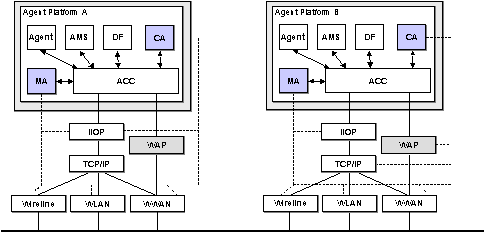
Figure 1: Reference Model of Agent based Adaptation
The most appropriate configuration of MAs and CAs is that there is at least one pair in each AP involving adaptation. The MA may measure the actual quality of service of an MTC, if the network running an MTC does not provide users with required performance data[1].
An MA may:
· Consist of network-service-specific components that collect raw performance data at fixed intervals,
· Provide a repository for the measurement data collected,
· Perform first level analysis of the collected data, and,
· Send the results of the analysis to CA, if requested to do so.
A CA may:
· Manage (establish, close, suspend, activate, etc.) an MTC[2].
In some cases there is a need for MAs and CAs in heterogeneous APs to communicate with each other; therefore, interaction protocols and ontologies to achieve this are specified in this document.
2.3 Negotiation of Message Transport Requirements
There are several mechanisms that can determine the MTP, message representation and content language to use between communicating entities:
· Communicating entities know a peer entity’s preferences beforehand and use them.
· The activating entity tries to use a method and if the peer entity is not capable of using the suggested method, then the activating entity may try another one (and so on).
· The communicating entities negotiate about a method to be used.
2.3.1 Negotiation About Message Transport Protocols
Previous FIPA specifications have implicitly assumed that the MTC is operational all the time (meaning that the MTC has been established before the agent message exchange and that it is reliable). However, this is not always the case within a nomadic environment.
A CA can activate the selection of an MTP or an agent can propose an MTP to a CA and it is the responsibility of the CA to either accept or reject the proposal based on whether it is possible to use the proposed MTP. CAs negotiate with peer CAs to use proposed MTPs which is illustrated in Figure 2.

Figure 2: Control Agents Negotiating About a Message Transport Protocol
CAs use the FIPA-Propose interaction protocol [FIPA00036] and the use action to negotiate about an MTP. An example negotiation is given in section 5.2, Negotiating Message Transport Protocols.
2.3.2 Negotiation About Message Representation
In the environment of nomadic applications, it may be necessary to switch from one ACL representation to another; for example, when a mobile host roams from a wireline network to a wireless network. Application agents may use the FIPA-Propose interaction protocol and the use action to negotiate about the representation of ACL. Examples of this negotiation are given in section 5.3, Negotiating Message Representation.
3 Nomadic Application Support Ontology
The FIPA-Nomadic-Application ontology is a combination of FIPA-MTS-QoS, FIPA-Communication-Management, and FIPA-Message-Representation ontologies.
3.1 Object Descriptions
This section describes a set of frames, that represent the classes of objects in the domain of discourse within the framework of the FIPA-Nomadic-Application ontology.
The following terms are used to describe the objects of the domain:
· Frame. This is the mandatory name of this entity, that must be used to represent each instance of this class.
· Ontology. This is the name of the ontology, whose domain of discourse includes the parameters described in the table.
· Parameter. This is the mandatory name of a parameter of this frame.
· Description. This is a natural language description of the semantics of each parameter.
· Presence. This indicates whether each parameter is mandatory or optional.
· Type. This is the type of the values of the parameter: Integer, Word, String, URL, Term, Set or Sequence.
· Reserved Values. This is a list of FIPA-defined constants that can assume values for this parameter.
3.1.1 Quality of Service Description
This type of object represents the quality of service of the transport protocol or communication channel.
|
Frame Ontology |
qos FIPA-MTS-QoS |
|
||
|
Parameter |
Description |
Presence[3] |
Type |
Reserved Values |
|
line-rate |
The bandwidth in one direction over the link. |
Optional |
rate-value |
|
|
throughput |
The number of user data bits successfully transferred in one direction across the link[4]. Successful transfer means that no user data bits are lost, added or inverted in transfer. |
Optional |
rate-value |
|
|
throughput-std-dev |
The current standard deviation of the throughput within a time unit. |
Optional |
rate-value |
|
|
rtt |
The round trip time which is the time required for a data segment to be transmitted to a peer entity and a corresponding acknowledgement sent back to the originating entity. |
Optional |
time-value |
|
|
rtt-std-dev |
The standard deviation of the round-trip time within a time unit. |
Optional |
time-value |
|
|
delay |
The (nominal) time required for a data segment to be transmitted to a peer entity. |
Optional |
time-value |
|
|
delay-std-dev |
The standard deviation of the delay time within a time unit. |
Optional |
time-value |
|
|
mean-up-time |
The expected uptime of an established link. |
Optional |
time-value |
|
|
omission-rate |
The probability that a data segment is not transmitted correctly over a link. |
Optional |
probability-value |
|
|
ber |
The ratio of the number of bit errors to the total number of bits transmitted in a given time interval[5]. |
Optional |
probability-value |
|
|
frame-error-rate |
The probability that a data segment is not transmitted correctly over a link. |
Optional |
probability-value |
|
|
conn-setup-delay |
The (sampled) delay to establish a connection between communicating entities. |
Optional |
time-value |
|
|
conn-setup-failure-prob |
The ratio of total call attempts that result in call setup failure to the total call attempts in a population of interest. |
Optional |
probability-value |
|
|
status |
The connectivity status of the link. Connected means that there (at least) logical connection between communicating entities. Disconnected means that there is no connection between communicating entities, and the communicating entities are not establishing a connection at the moment. Connecting means that there is no connection between communicating entities, but they are currently establishing a connection between them. |
Optional |
Word |
Connected Disconnected Connecting |
3.1.2 Rate Value
This type of object represents a data transfer value.
|
Frame Ontology |
rate-value FIPA-MTS-QoS |
|
||
|
Parameter |
Description |
Presence |
Type |
Reserved Values |
|
direction |
The direction in which this value is measured. Inbound means the data transmission where the actor receives the data, and outbound means the data transmission where the actor transmits the data. |
Mandatory |
Word |
Inbound Outbound |
|
unit |
The unit in which the value is represented. Bits/s means bits per seconds. Kbits/s means kilobits per seconds. One kilobit is 2^10 bits. Mbits/s means megabits per second. One megabit is 2^20 bits. Gbits/s means gigabits per second. One gigabit is 2^30 bits. |
Mandatory |
Word |
GBits/s MBits/s KBits/s Bits/s |
|
value |
The rate value. |
Mandatory |
Number |
|
3.1.3 Time Value
This type of object represents a time value.
|
Frame Ontology |
time-value FIPA-MTS-QoS |
|
||
|
Parameter |
Description |
Presence |
Type |
Reserved Values |
|
direction |
The direction in which this value is measured. Inbound means the data transmission where the actor receives the data, and outbound means the data transmission where the actor transmits the data. |
Optional[6] |
Word |
Inbound Outbound |
|
unit |
The unit in which the value is represented. h means hours, m means minutes, s means seconds, and ms means milliseconds. |
Mandatory |
Word |
h m s ms |
|
value |
The time value. |
Mandatory |
Number |
|
3.1.4 Probability Value
This type of object represents a probability value.
|
Frame Ontology |
probability-value FIPA-MTS-QoS |
|
||
|
Parameter |
Description |
Presence |
Type |
Reserved Values |
|
direction |
The direction in which this value is measured. Inbound means the data transmission where the actor receives the data, and outbound means the data transmission where the actor transmits the data. |
Optional |
Word |
Inbound Outbound |
|
value |
The probability value which obeys the following axiom: 0 ≤ value ≤ 1 |
Mandatory |
Number |
|
3.1.5 Change Constraint
This type of object represents constraints that limit quality of service notifications.
|
Frame Ontology |
change-constraint FIPA-MTS-QoS |
|
||
|
Parameter |
Description |
Presence |
Type |
Reserved Values |
|
value |
The description of the constraints. |
Mandatory |
Expression |
|
3.1.6 Time Constraint
This type of object represents constraints that limit quality of service notifications.
|
Frame Ontology |
time-constraint FIPA-MTS-QoS |
|
||
|
Parameter |
Description |
Presence |
Type |
Reserved Values |
|
type |
The type of the constraint. If the type Every is used, then the expression becomes true after value and thereafter at intervals of value. If the type After is used, then the expression becomes true only after value. |
Mandatory |
Word |
Every After |
|
value |
The time value. |
Mandatory |
time-value |
|
3.1.7 Communication Channel Description
This type of object represents a communication channel.
|
Frame Ontology |
comm-channel FIPA-Communication-Management |
|
||
|
Parameter |
Description |
Presence[7] |
Type |
Reserved Values |
|
name |
The logical name of the communication channel. |
Optional |
Word |
|
|
target-addr |
The target transport address of the communication channel. This may also be the address of a gateway ACC. |
Optional |
URL |
|
|
options |
A list of optional parameters for the communication channel. |
Optional |
Set
of property
(see
[FIPA00023]) |
|
3.1.8 Transport Protocol Description
This type of object represents a transport protocol.
|
Frame Ontology |
transport-protocol FIPA-Communication-Management |
|
||
|
Parameter |
Description |
Presence |
Type |
Reserved Values |
|
Name |
The logical name of the transport protocol. |
Mandatory |
Word |
|
|
gw-addr |
The transport address of the gateway ACC. |
Optional |
URL |
|
|
dest-addr |
The transport address of the ultimate destination. If this address is present, but gw-addr is not, then the Control Agent may select the most appropriate gateway transport address to use. |
Optional |
URL |
|
|
options |
A list of optional parameters for the transport protocol. |
Optional |
Set
of property |
|
3.1.9 Transport Protocol Selection
This type of object represents a selection of transport protocol.
|
Frame Ontology |
transports FIPA-Communication-Management |
|
||
|
Parameter |
Description |
Presence |
Type |
Reserved Values |
|
send |
A list of transport protocols supported for sending messages. |
Mandatory |
Sequence of transport-protocol |
|
|
recv |
A list of transport protocols supported for receiving messages. |
Mandatory |
Sequence
of transport-protocol |
|
3.1.10 Message Representation Description
This type of object represents an ACL message representation.
|
Frame Ontology |
msg-representation FIPA-Message-Representation |
|
||
|
Parameter |
Description |
Presence |
Type |
Reserved Values |
|
Name |
The name of the message representation. |
Mandatory |
Word |
See [FIPA00068] |
|
Options |
A list of parameters for the message representation. |
Optional |
Set
of property |
|
3.1.11 Message Representation Selection
This type of object represents a selection of message representations.
|
Frame Ontology |
msg-rep-selection FIPA-Message-Representation |
|
||
|
Parameter |
Description |
Presence |
Type |
Reserved Values |
|
send |
A list of message representations supported for sending messages. |
Mandatory |
Sequence of msg-representation |
|
|
recv |
A list of message representations supported for receiving messages. |
Mandatory |
Sequence
of msg-representation |
|
3.2 Function and Predicate Descriptions
The following tables define usage and semantics
of the functions and the predicates that are part of the FIPA-Nomadic-Application ontology.
The following terms are used to describe the functions of the FIPA-Nomadic-Application domain:
· Function. This is the symbol that identifies the function in the ontology.
· Predicate. This is the symbol that identifies the predicate in the ontology.
· Ontology. This is the name of the ontology, whose domain of discourse includes the function or the predicate described in the table.
· Supported by. This is the type of agent that supports this function or predicate.
· Description. This is a natural language description of the semantics of the function or the predicate.
· Domain. This indicates the domain over which the function predicate is defined. The arguments passed to the function or predicate must belong to the set identified by the domain.
· Range. This indicates the range to which the function maps the symbols of the domain. The result of the function is a symbol belonging to the set identified by the range.
· Arity. This indicates the number of arguments that a function or a predicate takes. If a function or a predicate can take an arbitrary number of arguments, then its arity is undefined.
3.2.1
Request Monitoring
Information
|
Predicate |
qos-information |
|
|
Ontology |
FIPA-Nomadic-Application |
|
|
Supported
by |
MA |
|
|
Description |
An agent asks for quality of service information from an MA using the FIPA-Query interaction protocol (see [FIPA00027]). The agent may specify either a communication channel or transport protocol to request quality of service information from. The
predicate is true, when the values of the QoS parameters defined in the QoS
object are true for given communication channel or transport protocol (i.e.,
the QoS of communication channel or transport protocol is what stated in the
QoS object). Otherwise the predicate is false. |
|
|
Domain |
||
|
Arity |
2 |
|
3.2.2 Subscribe to Changes
|
Predicate |
qos-notification |
|
|
Ontology |
FIPA-Nomadic-Application |
|
|
Supported
by |
MA |
|
|
Description |
An agent subscribes to notifications about changes to the quality of service from an MA using the FIPA-Subscribe interaction protocol (see [FIPA00035]). The
predicate is true, when the values of the QoS parameters defined in the QoS
object are true for given communication channel or transport protocol, and
the given constraints are met. Otherwise the predicate is false. |
|
|
Domain |
comm-channel, qos, change-constraints / time-constraints |
|
|
Arity |
3 |
|
3.2.3
Open Communication
Channel
|
Function |
open-comm-channel |
|
|
Ontology |
FIPA-Nomadic-Application |
|
|
Supported
by |
CA |
|
|
Description |
An
agent can request that a CA open a communication channel. The communication
channel description should contain enough information for a CA to be able to
choose the right communication channel, that is, either the :name parameter or the :target-addr
parameter must be present. The agent may also supply additional communication
channel information by using the :options parameter. |
|
|
Domain |
comm-channel |
|
|
Range |
The
execution of this function results in a change of the state, but it has no
explicit result. Therefore there is no range set. |
|
|
Arity |
1 |
|
3.2.4
Close
Communication Channel
|
Function |
close-comm-channel |
|
|
Ontology |
FIPA-Nomadic-Application |
|
|
Supported
by |
CA |
|
|
Description |
An
agent can request that a CA close a communication channel. The communication
channel description should contain enough information for a CA to be able to
choose the right communication channel, that is, either the :name parameter or the :target-addr
parameter must be present. |
|
|
Domain |
comm-channel |
|
|
Range |
The
execution of this function results in a change of the state, but it has no
explicit result. Therefore there is no range set. |
|
|
Arity |
1 |
|
3.2.5
Activate a Message
Transport Protocol
|
Function |
activate |
|
|
Ontology |
FIPA-Nomadic-Application |
|
|
Supported
by |
CA |
|
|
Description |
An
agent can request that a CA activate a Message Transport Protocol (MTP). The
transport protocol description should contain enough information to allow the
CA to identify the correct transport protocol. Additionally, the agent may
supply address information to where the transport protocol connection should
be opened. It is possible to give the address of the gateway and/or the
address of the destination AP. |
|
|
Domain |
Sequence
of transport-protocol |
|
|
Range |
transport-protocol |
|
|
Arity |
1 |
|
3.2.6
Deactivate a
Message Transport Protocol
|
Function |
deactivate |
|
|
Ontology |
FIPA-Nomadic-Application |
|
|
Supported
by |
CA |
|
|
Description |
An
agent can request that a CA deactivate an MTP. |
|
|
Domain |
transport-protocol |
|
|
Range |
The
execution of this function results in a change of the state, but it has no
explicit result. Therefore there is no range set. |
|
|
Arity |
1 |
|
3.2.7
Select a Message
Transport Protocol
|
Function |
use |
|
|
Ontology |
FIPA-Nomadic-Application |
|
|
Supported
by |
CA |
|
|
Description |
An
CA can request another CA to select an MTP for use between Agent
Communication Channels (ACCs) using the FIPA-Propose interaction protocol (see [FIPA00036]). The requesting CA shall provide
enough information to establish a working MTP connection. The direction of
communication (either send, receive or both) and the list of MTPs must be
present. The list of MTPs is an ordered list where the highest priority is
the first item and the lowest priority is the last item in the list. The
receiving CA shall select at most one MTP for the proposed direction of
communication (either send, receive or both) |
|
|
Domain |
transports |
|
|
Range |
transports |
|
|
Arity |
1 |
|
3.3
Exceptions
The exceptions for the FIPA-Nomadic-Application ontology follow the same form and rules as specified in [FIPA00023].
3.3.1 Not Understood Exception Propositions
The same set of “Not Understood Exception Propositions” as in the FIPA-Agent-Management ontology is used in the FIPA-Nomadic-Application ontology (see [FIPA00023]).
3.3.2 Refusal Exception Propositions
The same set of “Refusal Exception Propositions” as defined in the FIPA-Agent-Management ontology is used in FIPA-Nomadic-Application ontology (see [FIPA00023]). In addition, the FIPA-Nomadic-Application ontology defines the propositions given below.
|
Communicative
Act Ontology |
Refuse FIPA-Nomadic-Application |
|
|
Predicate
symbol |
Arguments |
Description |
|
already-open |
String |
The specified communication channel is already open; the string identifies the communication channel. |
|
not-open |
String |
The specified communication channel is not open; the string identifies the communication channel. |
|
already-activated |
String |
The specified transport protocol is already activated; the string identifies the transport protocol. |
|
not-active |
String |
The specified transport protocol is not active; the string identifies the transport protocol. |
|
unrecognised-comm-channel |
String |
The specified communication channel is not recognised; the string identifies the communication channel. |
|
unsupported-protocol |
String |
The specified transport protocol is not supported; the string identifies the transport protocol. |
3.3.3 Failure Exception Propositions
|
Communicative
Act Ontology |
failure FIPA-Agent-Management |
|
|
Predicate
symbol |
Arguments |
Description |
|
internal-error |
String |
See [FIPA00023]. |
|
open-failed |
String |
The opening of a communication channel failed; the string identifies the failure reason. |
|
transient-failed |
String |
The opening/closing of a communication channel or the activation/deactivation of a transport protocol failed; the string identifies the failure reason. |
|
close-failed |
String |
The closing of a communication channel failed; the string identifies the failure reason. |
|
activation-failed |
String |
The activation of a transport protocol failed; the string identifies the failure reason. |
|
deactivation-failed |
String |
The deactivation of a transport protocol failed; the string identifies the failure reason. |
4 Registration of the Control Agent and Monitor Agent with the DF
In order for a Control Agent and Monitor Agent to advertise its willingness to provide its services to an agent domain, it must register with a DF (as described in [FIPA00023].
As
part of this registration process following of constant values are introduced
that universally identify the services the agent provides:
· The name slot in service-description frame of a Control Agent must be declared as a constant fipa-mts-control.
· The type slot in service-description frame of a Control Agent must be declared as a constant fipa-ca.
· The ontology slot in service-description frame of a Control Agent should be declared as a constant fipa-nomadic-application or a constant fipa-communication-management.
· The type slot in service-description frame of a Monitor Agent must be declared as a constant fipa-mts-monitor.
· The type slot in service-description frame of a Monitor Agent must be declared as a constant fipa-ma.
· The ontology slot in service-description frame of a Monitor Agent should be declared as a constant fipa-nomadic-application.
Below is given an example content of a agent df-agent-description frame which provides
both MA and CA functionality:
(df-agent-description
:name
(agent-identifier
:name
monitor&control_agent@iiop://foo.com/acc
:addresses (sequence iiop://foo.com/acc))
:protocols (set fipa-request
fipa-propose fipa-subscribe)
:ontology (set
fipa-nomadic-application)
:language (set fipa-sl0)
:services (set
(service-description
:name fipa-mts-control
:type fipa-ca
:ontology
fipa-nomadic-application)
(service-description
:name fipa-mts-monitor
:type fipa-ma
:ontology fipa-nomadic-application))
:ownership (set
Sonera)))))
5 Scenarios
5.1 Registration with a DF
1. A CA registers with a DF (see [FIPA00023]):
(request
:sender
(agent-identifier
:name ca@foo.com
:addresses (sequence http://foo.com/acc))
:receiver (set
(agent-identifier
:name df@foo.com
:addresses (sequence http://foo.com/acc)))
:language FIPA-SL0
:protocol FIPA-Request
:ontology FIPA-Agent-Management
:content
(action
(agent-identifier
:name df@foo.com
:addresses (sequence
http://foo.com/acc))
(register
(df-agent-description
:name
(agent-identifier
:name ca@foo.com
:addresses (sequence http://foo.com/acc))
:services (set
(service-description
:name fipa-mts-control
:type fipa-ca
:ontology (set FIPA-Nomadic-Application))))))))
2. A MA registers with a DF:
(request
:sender
(agent-identifier
:name ma@foo.com
:addresses (sequence http://foo.com/acc))
:receiver (set
(agent-identifier
:name df@foo.com
:addresses (sequence http://foo.com/acc)))
:language FIPA-SL0
:protocol FIPA-Request
:ontology FIPA-Agent-Management
:content
(action
(agent-identifier
:name df@foo.com
:addresses (sequence
http://foo.com/acc))
(register
(df-agent-description
:name
(agent-identifier
:name ma@foo.com
:addresses (sequence http://foo.com/acc))
:services (set
(service-description
:name fipa-mts-monitor
:type fipa-ma
:ontology (set FIPA-Nomadic-Application))))))))
5.2 Negotiating Message Transport Protocols
This example shows a scenario, where an application agent requests the use of either the WAP MTP [FIPA00076] or a proprietary MTP (for example, x.uh.mdcp). The message flow of a successful negotiation is illustrated in Figure 3.
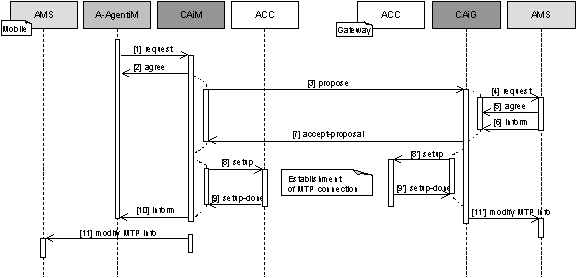
Figure 3: Flow of Message Transport Protocol Negotiation
1. Message 1 request: An application agent issues a request to the CA to activate either the fipa.mts.mtp.wap.std or x.uh.mdcp MTPs.
(request
:sender
(agent-identifier
:name A-AgentiM@mobile.com[10])
:receiver (set
(agent-identifier
:name CaiM@mobile.com))
:ontology FIPA-Nomadic-Application
:language FIPA-SL0
:protocol FIPA-Request
:content
(action
(agent-identifier
:name CAiM@mobile.com)
(activate (sequence
(transport-protocol
:name x.uh.mdcp)
(transport-protocol
:name fipa.mts.mtp.wap.std
:dest-addr wap://gateway.com:1234/acc)))))
2. Message 2 agree: The CA agrees to activate an MTP. The decision to agree or disagree to activate an MTP might be based on the internal state of the CA (that is, the CA knows whether a requested MTP can be activated or not) or the CA might ask for an AP description from an AMS.
(agree
:sender
(agent-identifier
:name CAiM@mobile.com)
:receiver (set
(agent-identifier
:name A-AgentiM@mobile.com))
:ontology FIPA-Nomadic-Application
:language FIPA-SL0
:protocol FIPA-Request
:content
((action
(agent-identifier
:name CAiM@mobile.com))
(activate (sequence
(transport-protocol
:name x.uh.mdcp)
(transport-protocol
:name fipa.mts.mtp.wap.std
:dest-addr
wap://gateway.com:1234/acc))))
true))
3. Message 3 propose: The CA in the mobile host proposes to its peer CA in the gateway host that either the fipa.mts.mtp.wap.std or x.uh.mdcp MTPs should be used in communication between the APs.
<?xml version="1.0"?>[11]
<envelope>
<params index="1">
<to>
<agent-identifier>
<name>CAiG@gateway.com</name>
</agent-identifier>
</to>
<from>
<agent-identifier>
<name>CAiM@mobile.com</name>
</agent-identifier>
</from>
<acl-representation>fipa.acl.rep.string.std</acl-representation>
<date>20000606T100900000</date>
</params>
</envelope>
(propose
:sender
(agent-identifier
:name
CAiM@mobile.com)
:receiver
(set
(agent-identifier
:name
CAiG@gateway.com))
:ontology
FIPA-Nomadic-Application
:language
FIPA-SL0
:protocol
FIPA-Propose
:content
((action
(agent-identifier
:name CAiM@mobile.com)
(use
(transports
:send (sequence
(transport-protocol
:name x.uh.mdcp)
(transport-protocol
:name fipa.mts.mtp.wap.std))
:recv (sequence
(transport-protocol
:name x.uh.mdcp)
(transport-protocol
:name fipa.mts.mtp.wap.std)))))
true))
4. Message 4 request, message 5 agree and message 6 inform: The CA in the gateway host requests the AP description from the local AMS (see [FIPA00023]) to determine whether the x.uh.mdcp or fipa.mts.mtp.wap.std MTPs are supported. The AMS informs the CA that both MTPs are supported and the CA decides to use fipa.mts.mtp.wap.std MTP based on the current quality of service requirements of the MTC.
(request
:sender
(agent-identifier
:name CAiG@gateway.com)
:receiver (set
(agent-identifier
:name ams@gateway.com))
:ontology FIPA-Agent-Management
:language FIPA-SL0
:protocol FIPA-Request
:content
(action
(agent-identifier
:name ams@gateway.com)
get-description))
(agree
:sender
(agent-identifier
:name ams@gateway.com)
:receiver (set
(agent-identifier
:name CAiG@gateway.com))
:ontology FIPA-Agent-Management
:language FIPA-SL0
:protocol FIPA-Request
:content
((action
(agent-identifier
:name ams@gateway.com)
get-description)
true))
(inform
:sender
(agent-identifier
:name ams@gateway.com
:addresses (sequence
http://gateway.com/acc))
:receiver (set
(agent-identifier
:name CAiG@gateway.com
:addresses (sequence
http://gateway.com/acc)))
:ontology FIPA-Agent-Management
:language FIPA-SL0
:protocol FIPA-Request
:content
(ap-description
:name sonera-platform
:transport-profile
(ap-transport-description
:available-mtps
(set
(mtp-description
:profile
fipa.profile.mts.alpha
:mtp-name fipa.mts.mtp.iiop.std
:addresses (sequence
iiop://gateway.com/acc))
(mtp-description
:profile fipa.profile.mts.beta
:mtp-name fipa.mts.mtp.wap.std
:addresses (sequence
wap://gateway.com:1234/acc))
(mtp-description
:profile x.uh.profile
:mtp-name x.uh.mdcp
:addresses (set
mdcp://gateway.com/acc))))))
5. Message 7 accept-proposal: The CA in the gateway host accepts the proposal to use the fipa.mts.mtp.wap.std MTP and sends the response to the CA in the mobile host informing it about the preferred MTP.
(accept-proposal
:sender
(agent-identifier
:name CAiG@gateway.com)
:receiver (set
(agent-identifier
:name CAiM@mobile.com))
:ontology FIPA-Nomadic-Application
:language FIPA-SL0
:protocol FIPA-Propose
:content
(action
(agent-identifier
:name CAiM@mobile.com)
(use
(transports
:send (sequence
(transport-protocol
:name x.uh.mdcp)
(transport-protocol
:name fipa.mts.mtp.wap.std))
:recv (sequence
(transport-protocol
:name x.uh.mdcp)
(transport-protocol
:name fipa.mts.mtp.wap.std)))))
(transports
:send (sequence
(transport-protocol
:name fipa.mts.mtp.wap.std))
:recv (sequence
(transport-protocol
:name fipa.mts.mtp.wap.std))))
6. Messages 8 and 8’ setup: The CAs request their respective ACCs to setup the fipa.mts.mtp.wap.std MTP. This is an implementation issue.
7. Message 9 and 9’ setup-done: The ACCs inform their respective CAs that the fipa.mts.mtp.wap.std MTP has been established between the mobile host and the gateway host.
8. Message 10 inform: The CA informs the application agent that the MTC is established.
(inform
:sender
(agent-identifier
:name CAiM@mobile.com)
:receiver (set
(agent-identifier
:name A-AgentiM@mobile.com))
:ontology FIPA-Nomadic-Application
:language FIPA-SL0
:protocol FIPA-Request
:content
(result
(action
(agent-identifier
:name CaiM@mobile.com)
(activate (sequence
(transport-protocol
:name x.uh.mdcp)
(transport-protocol
:name fipa.mts.mtp.wap.std
:dest-addr
wap://gateway.com:1234/acc))))
(transport-protocol
:name fipa.mts.mtp.wap.std))
9. Message 11 and 11’ set-description: CAiM (/CAiG) modifies the AP description to show that the fipa.mts.mtp.wap.std is now active.
5.3 Negotiating Message Representations
This example shows a scenario where an application agent in a mobile host proposes to its peer application agent in a fixed host the use of the fipa.acl.rep.bitefficient.std representation of ACL [FIPA00069] for their communication. The message flow is illustrated in Figure 4.
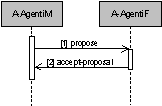
Figure 4: Flow of Message Representation Negotiation
1. Message 1 propose: The agent in the mobile host proposes the use of the fipa.acl.rep.bitefficient.std representation of ACL.
(propose
:sender
(agent-identifier
:name A-AgentiM@mobile.com)
:receiver (set
(agent-identifier
:name A-AgentiF@fixed.com))
:ontology FIPA-Message-Representation
:language FIPA-SL0
:protocol FIPA-Propose
:content
((action
(agent-identifier
:name A-AgentiM@mobile.com)
(use
(msg-rep-selection
:send (sequence
(msg-representation
:name
fipa.acl.rep.bitefficient.std))
:recv (sequence
(msg-representation
:name
fipa.acl.rep.bitefficient.std)))))
true))
2. Message 2 accept-proposal: The agent in the fixed host accepts the proposal.
(accept-proposal
:sender
(agent-identifier
:name A-AgentiF@fixed.com)
:receiver (set
(agent-identifier
:name A-AgentiM@mobile.com))
:ontology FIPA-Message-Representation
:language FIPA-SL0
:protocol FIPA-Propose
:content
(action
(agent-identifier
:name A-AgentiM@mobile.com)
(use
(msg-rep-selection
:send (sequence
(msg-representation
:name
fipa.acl.rep.bitefficient.std))
:recv (sequence
(msg-representation
:name
fipa.acl.rep.bitefficient.std))))
(msg-rep-selection
:send (sequence
(msg-representation
:name
fipa.acl.rep.bitefficient.std))
:recv (sequenc
(msg-representation
:name
fipa.acl.rep.bitefficient.std))))
5.4 Message Exchange Over a WAP Message Transport Protocol
Figure 5 refers to reference architecture for message exchange in context of nomadic applications. Messages between the mobile host and gateway host are delivered mainly using the fipa.mts.mtp.wap.std MTP and messages between gateway host and other APs in the fixed network are delivered using the fipa.mts.mtp.iiop.std MTP (see [FIPA00075]).
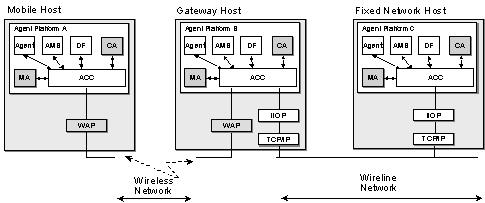
Figure 5: Gateway-Based Nomadic Application Architecture
5.4.1 Message Exchange Activation by an Agent in a Mobile Host
This example shows the scenario where an agent in a mobile host has a WAP address and an agent in fixed host has an IIOP address. In this example, there are three specific APs involved; one running in a mobile host, one running in a gateway host and the last one running in a host situated in a fixed network which represents the rest of the network. An example of the flow of a message exchange is illustrated in Figure 6.
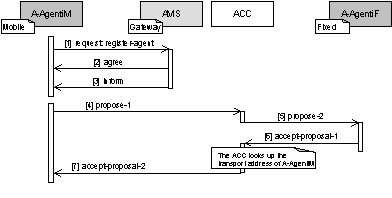
Figure 6: Mobile Originated Message Exchange Over Gateway Host
1. Message 1 request, message 2 agree and message 3 inform: In order to be reachable from an AP operating in a fixed network environment, an agent in the mobile host must register with the AP running in the gateway host. Subsequently, the ACC in the gateway host AP can forward messages intended for the agent operating in the mobile host to the ACC.
(request
:sender
(agent-identifier
:name A-AgentiM@mobile.com)
:receiver (set
(agent-identifier
:name ams@gateway.com))
:language FIPA-SL0
:protocol FIPA-Request
:ontology FIPA-Agent-Management
:content
(action
(agent-identifier
:name ams@gateway.com)
(register
(ams-agent-description
:name
(agent-identifier
:name A-AgentiM@mobile.com
:addresses (sequence wap://mobile.com:1234/acc))
:state active))))
The AMS informs A-AgentiM that registration was completed successfully and after registration, A-AgentiM can be reached via the gateway host using, for example, the following to envelope parameter:
<to>
<agent-identifier>
<name>A-AgentiM@mobile.com</name>
<addresses>
<url>iiop://gateway.com/acc</url>
</addresses>
</agent-identifier>
</to>
If the gateway host is not operational, then the direct WAP address (wap://mobile.com:1234/acc) could be used.
2. Message 4 propose 1: A-AgentiM sends a propose message to A-AgentiF. In the from envelope parameter, A-AgentiM informs A-AgentiF that its primary return address is its address in the gateway host.
<?xml version="1.0"?>
<envelope>
<params
index="1">
<to>
<agent-identifier>
<name>A-AgentiF@fixed.com</name>
<addresses>
<url>iiop://fixed.com/acc</name>
</addresses>
</agent-identifier>
</to>
<from>
<agent-identifier>
<name>A-AgentiM@mobile.com</name>
<addresses>
<url>iiop://gateway.com/acc</url>
<url>wap://mobile.com:1234/acc>/url>
</addresses>
</agent-identifier>
</from>
<acl-representation>fipa.acl.rep.string.std</acl-representation>
<date>20000606T100900000</date>
</params>
</envelope>
(propose
:sender
(agent-identifier
:name A-AgentiM@mobile.com)
:receiver (set
(agent-identifier
:name A-AgentiF@fixed.com))
:language FIPA-SL0
:content
(action
(agent-identifier
:name A-AgentiM@mobile.com)
(compress-data (> object-size 1kb)))
The ACC in the mobile host forwards the message to the ACC in the gateway host using fipa.mts.mtp.wap.std MTP[12].
3. Message 5 propose 2: The ACC in the gateway host forwards the message to A-AgentiF using fipa.mts.mtp.iiop.std MTP. The ACC may change the encoding of the message.
4. Message 6 accept-proposal 1: A-AgentiF accepts A-AgentiM’s proposal by sending an accept-proposal message to A-AgentiM using its gateway host address.
(accept-proposal
:sender
(agent-identifier
:name A-AgentiF@fixed.com)
:receiver (set
(agent-identifier
:name A-AgentiM@mobile.com))
:language FIPA-SL0
:content
((action
(agent-identifier
:name A-AgentiM@mobile.com)
(compress-data (> object-size 1kb)))
true))
5. Message 7 accept-proposal 2: The ACC in the gateway host forwards the message to the ACC in the mobile host using the fipa.mts.mtp.wap.std MTP. The ACC may change the encoding of the message.
5.4.2 Message Exchange Termination to an Agent in a Mobile Host
This example shows the scenario where an agent in a fixed host activates a conversation. The message flow is illustrated in Figure 7.
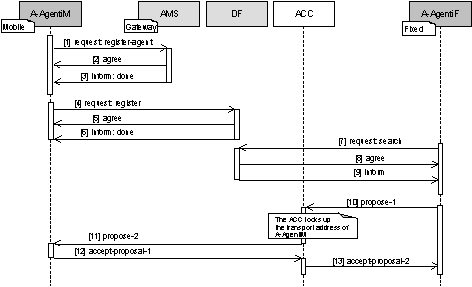
Figure 7: Mobile Terminated Message Exchange Over Gateway Hosts
1. Message 1 request, message 2 agree and message 3 inform: See Section 5.4.1, Message Exchange Activation by an Agent in a Mobile Host.
2. Message 4 request: A-AgentiM needs to register its services with the DF in the gateway host in order to be able to publicise its services even when the mobile host itself is disconnected from the fixed network.
(request
:sender
(agent-identifier
:name A-AgentiM@mobile.com)
:receiver (set
(agent-identifier
:name df@gateway.com))
:ontology FIPA-Agent-Management
:language FIPA-SL0
:protocol FIPA-Request
:content
(action
(agent-identifier
:name df@gateway.com)
(register
(df-agent-description
:name
(agent-identifier
:name A-AgentiM@mobile.com
:addresses (sequence
iiop://gateway.com/acc wap://mobile.com:1234/acc))
:services (set
(service-description
:name Field-Warrior
:type field-information
:ontology (set field-service)
:properties (set
(property
:name availability
:value 24h))))
:language (set FIPA-SL0))))
3. Message 5 agree and message 6 inform: The DF in the gateway host AP informs A-AgentiM that registration was successful.
(inform
:sender
(agent-identifier
:name df@gateway.com)
:receiver (set
(agent-identifier
:name A-AgentiM@mobile.com))
:language FIPA-SL0
:protocol FIPA-Request
:ontology FIPA-Agent-Management
:content
(done
(action
(agent-identifier :name
df@gateway.com)
(register
(df-agent-description
:name
(agent-identifier
:name A-AgentiM@mobile.com
:addresses (sequence
iiop://gateway.com/acc wap://mobile.com:1234/acc))
:services
(service-description (set
:name Field-Warrior
:type field-information
:ontology field-service
:properties (set
(property
:name availability
:value 24h))))
:language (set FIPA-SL0)))))
4. Message 7 request, message 8 agree and message 9 inform: When A-AgentiM needs the Field-Warrior service, it searches the gateway host DF which informs it that A-AgentiM offers such a service (see [FIPA00023]).
5. Message 10, 11, 12 and 13: The messages used and the message flow are similar to the example in Section 5.4.1, Message Exchange Activation by an Agent in a Mobile Host.
6 Informative Annex A — Paramedic Scenario
This section illustrates some of the important issues of nomadic application support, using a paramedic application as an example.
6.1 Overview
A paramedic team has several working environments:
· An emergency dispatch centre, which is covered by the hospital ATM network,
· A geographical area, which is wireless wide-area network (e.g. GPRS), and,
· One or more hospitals, which are provided with a wireless local-area network.
When in transit, the paramedic computers are attached to docking stations residing in ambulances. At the dispatch centre, the docking stations are connected to the ATM network. The paramedic application comprises the following services:
· Retrieval of a patient’s personal information, such as name, address, phone, and relatives,
· Retrieval of the patient’s medical histories,
· Support for paramedic workers, and,
· Informing the hospital receiving the patient about the patient’s current injury or illness and medical care given so far.
There are several application agents: Paramedic Support Agents (PSAs) working in the paramedic computers, Dispatching Support Agent (DSA) working at the dispatch centre system, and the Hospital First Aid Support Agent (HFASA) working at the hospital system.
The dispatch centre receives a call regarding a man who has severe chest pain; the symptom of an acute myocardial infarct. The caller identifies the man and gives his personal identification number to the dispatcher. The dispatcher alerts the paramedic team and informs the DSA about the address where the patient is located and his personal identification number. The DSA simultaneously informs the PSA about the address of the attack (and possibly some additional information about the environment of the heart attack) and queries the patient’s medical history. Since the results of the query to a local hospital are received before the paramedic unit is dispatched, the DSA (in co-operation with the PSA) begins to load the patient’s personal information and medical history into the paramedic computers. The medical history includes several items of text-based information. The transmission time to load the information via the ATM network to the paramedic computers (which are currently docked at the dispatch centre) is less than a second. Before the ambulance leaves the dispatch centre, the docking station is detached from the ATM network and is connected to the wireless wide-area network.
While the ambulance is approaching the location of the incident, the DSA receives more relevant results of the query of the medical histories such as the latest heart operation of the patient. The medical history comprises several parts of textual information and several images and the DSA begins loading the information. As the loading takes place when the ambulance is in motion, the DSA finds out that the quality of transport service is too low for loading some textual parts and any of the images of the medical history. It would take at least 40 minutes to download the images. Therefore, the DSA informs the PSA that images are not required for the paramedic unit. During downloading, the ambulance drives into a tunnel that causes the wireless link to be disconnected. After the tunnel, a CA re-establishes the connection and downloading continues.
At the scene, the ambulance is stationary and the quality of transmission service increases to a level at which the DSA is able to load the most relevant images (the ECGs) using an efficient compression method which is negotiated between the DSA and the PSA to the paramedic computer. The paramedic team detaches the computers from the docking station and carries them to the patient.
The paramedic team realises that they need the assistance of a medical expert located at the university hospital to stabilise the patient’s condition. Therefore, they attach electrodes to the patient and the PSA starts transmitting the data of measurement such as SpO2 (oxygen saturation), cardiac rhythm, ECG, end tidal CO2 and temperature to the hospital. After successfully stabilising the patient’s condition, the paramedic team moves the patient to the ambulance and sets off for the hospital. As the quality of the transport service decreases because of the motion, the PSA finds out that not all the on-going measurement data can be transmitted on-line to the hospital. Therefore, the PSA decides to transmit the most relevant data (SpO2 and cardiac rhythm). The PSA stores the rest of the data (ECG, end tidal CO2 and temperature) into a cache of the paramedic computer.
After the ambulance arrives at the hospital, the patient is transferred immediately to an operating room. Simultaneously, the paramedic team connects their paramedic computer to the wireless LAN of the hospital and the PSA transmits (in co-operation with the HFASA) all the measurement data to the hospital’s system. A surgeon retrieves and analyses the measurement data before surgery.
This example illustrates a future agent-based distributed system that offers its services at the best obtainable quality of service in a wide variety of environments. A possible agent architecture is illustrated in Figure 8 which refers to three separate APs: Dispatch, Gateway and Paracom. In addition, there are several hospital APs which are not illustrated.
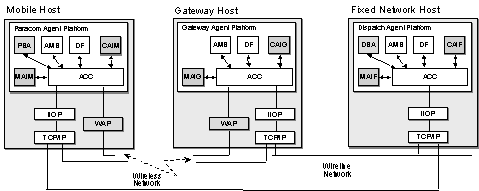
Figure 8: Paramedic Scenario Architecture
The agents in the scenario are:
· MAiM, MAiG and MAiF are MAs which monitor the quality of the communication service,
· CAiM, CAiG and CAiF are CAs which manage the establishment, teardown, suspension, activation, etc. of the connection between the PAs. The MA informs application agents about the status and changes of the network services.
When the mobile host is connected either to the ATM network or to the wireless LAN, the fipa.mts.mtp.iiop.std MTP is used directly between the Paracom AP and the Dispatch AP. When the mobile host is connected to the wireless WAN, all agent message communication takes place through the gateway host. The fipa.mts.mtp.wap.std MTP is primarily used between the Paracom AP and the Gateway AP. The fipa.mts.mtp.iiop.std MTP is used between the Gateway AP and the Dispatch AP.
6.2 Seamless Roaming
The Seamless Roaming scenario describes the process, when the paramedic computer roams from the ATM network to the UMTS network. The scenario is split into following events:
· Disconnection and reconnection of MTCs,
· Negotiation of MTPs, and,
· Negotiation of message representations.
6.2.1 Disconnection and Reconnection of an Message Transport Connection
The message exchange between the agents is illustrated in Figure 9.
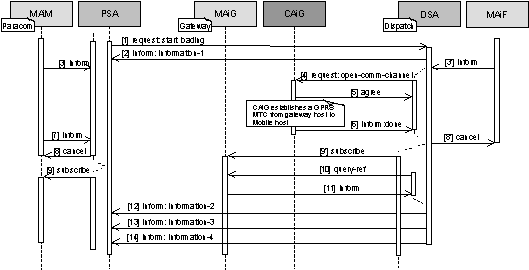
Figure 9: Disconnection and Reconnection of an Message Transport Connection
1. Message 1 request: The PSA starts loading data from the DSA by sending a request message. This message is application specific and thus not shown here.
2. Message 2 inform: The DSA starts sending information by first sending an inform message.
3. Messages 3 and 3’ inform: MAiM (/ MAiF) informs the PSA (/DSA) that the ATM connection has broken.
(inform
:sender
(agent-identifier
:name MAiM@paracom.com)
:receiver (set
(agent-identifier
:name PSA@paracom.com))
:ontology FIPA-Nomadic-Application
:language FIPA-SL2
:protocol FIPA-Subscribe
:content
(= (iota ?x
(qos-information
(comm-channel
:name ATM
:target-addr
iiop://dispatch.com/acc)
(qos
:status ?x)))
disconnected))
4. Message 4 request: The DSA requests CAiG to open a wireless wide-area MTC.
(request
:sender
(agent-identifier
:name DSA@dispatch.com)
:receiver (set
(agent-identifier
:name CAiG@gateway.com))
:ontology FIPA-Nomadic-Application
:language FIPA-SL0
:protocol FIPA-Request
:content
(action
(agent-identifier
:name CAiG@gateway.com)
(open-comm-channel
(comm-channel
:name GPRS
:target-addr
iiop://paramedic.com/acc))))
5. Message 5 agree: CAiG agrees that it will try to open the GPRS connection.
(agree
:sender
(agent-identifier
:name CAiG@gateway.com)
:receiver (set
(agent-identifier
:name DSA@dispatch.com))
:ontology FIPA-Nomadic-Application
:language FIPA-SL0
:protocol FIPA-Request
:content
((action
(agent-identifier
:name CAiG@gateway.com)
(open-comm-channel
(comm-channel
:name GPRS
:target-addr iiop://paramedic.com/acc))))
true))
Next CAiG establishes a GPRS MTC from the gateway host to the mobile host. This is an implementation issue.
6. Message 6 inform: After successful establishment, CAiG informs the DSA.
(inform
:sender
(agent-identifier
:name CAiG@gateway.com)
:receiver (set
(agent-identifier
:name DSA@dispatch.com))
:ontology FIPA-Nomadic-Application
:language FIPA-SL0
:protocol FIPA-Request
:content
(done
(action
(agent-identifier
:name CAiG@gateway.com))
(open-comm-channel
(comm-channel
:name GPRS
:target-addr
iiop://paramedic.com/acc)))))
7. Message 7 inform: MAiM informs the PSA that a new MTC has been established.
(inform
:sender
(agent-identifier
:name MAiM@paracom.com)
:receiver (set
(agent-identifier
:name PSA@paracom.com))
:ontology FIPA-Nomadic-Application
:language FIPA-SL2
:protocol FIPA-Subscribe
:content
(= (iota ?x
(qos-information
(comm-channel
:name GPRS
:target-addr
wap://paramedic.com:1234/acc)
(qos
:status ?x)))
connected))
8. Message 8 and 8’ cancel: The PSA (/DSA) cancels subscription notifications about the changes in the ATM MTC.
(cancel
:sender
(agent-identifier
:name PSA@paracom.com)
:receiver (set
(agent-identifier
:name MAiM@paracom.com))
:ontology FIPA-Nomadic-Application
:language FIPA-SL0
:protocol FIPA-Subscribe
:content
(subscribe
:sender
(agent-identifier
:name PSA@paracom.com)
:receiver (set
(agent-identifier
:name MAiM@paracom.com))
:ontology FIPA-Nomadic-Application
:language FIPA-SL2
:protocol FIPA-Subscribe
:content
(iota ?x
(qos-information
(comm-channel
:name GPRS
:target-addr
wap://paramedic.com:1234/acc)
(qos
:status ?x)))))
9. Message 9 and 9’ subscribe: The DSA (/PSA) subscribes to MAiG (/MAiM) for notifications about the changes in the GPRS MTC.
(subscribe
:sender
(agent-identifier
:name DSA@dispatch.com)
:receiver (set
(agent-identifier
:name MAiG@gateway.com))
:ontology FIPA-Nomadic-Application
:language FIPA-SL2
:protocol FIPA-Subscribe
:content
(iota ?x
(qos-information
(comm-channel
:name GPRS
:target-addr
iiop://paramedic.com/acc)
(qos
:status ?x))))
10. Message 10 query-ref: The DSA requests current quality of service of the GPRS MTC from MAiG.
(query-ref
:sender
(agent-identifier
:name DSA@dispatch.com)
:receiver (set
(agent-identifier
:name MAiG@gateway.com))
:ontology FIPA-Nomadic-Application
:language FIPA-SL2
:protocol FIPA-Query
:content
(iota ?x
(qos-information
(comm-channel
:name GPRS)
(qos
:throughput ?x)))
11. Message 11 inform: MAiG informs the DSA the current quality of service of the GPRS MTC.
(inform
:sender
(agent-identifier
:name MAiG@gateway.com)
:receiver (set
(agent-identifier
:name DSA@dispatch.com))
:ontology FIPA-Nomadic-Application
:language FIPA-SL2
:protocol FIPA-Query
:content
(= (iota ?x
(qos-information
(comm-channel
:name GPRS)
(qos
:throughput ?x)))
(rate-value
:direction Outbound
:unit Kbits/s
:value 20)))
12. Messages 12, 13 and 14 inform: The DSA sends the rest of the requested information to the PSA.
6.2.2 Example Negotiation of a Message Transport Protocol
When the mobile host roams from the ATM network to the GPRS network – after the reconnection – the PSA receives the information from MAiM that the Paracom AP is now connected to the GPRS MTC. The PSA reasons that the fipa.mts.mtp.wap.std MTP is better in that environment and it requests the CAiM to establish this MTP between ACCiM and ACCiG. Also, CAiM proposes the establishment of this MTP to CAiG, which accepts the proposal, and they command their respective ACCs to set it up. As a last action, both CAiF and CAiG modify the AP descriptions of their APs. The message flow is illustrated in Figure 10.
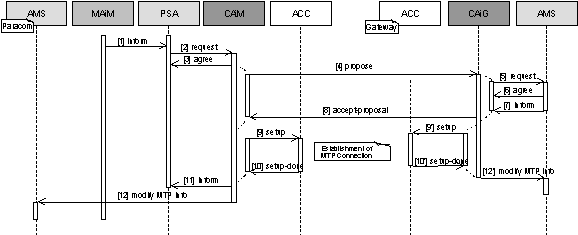
Figure 10: Example Negotiation of a Message Transport Protocol
1. Message 1 inform: MAiM informs the PSA that the Paracom AP is now connected to the GPRS network.
(inform
:sender
(agent-identifier
:name MAiM@paracom.com)
:receiver (set
(agent-identifier
:name PSA@paracom.com))
:ontology FIPA-Nomadic-Application
:language FIPA-SL2
:protocol FIPA-Subscribe
:content
(= (iota ?x
(qos-information
(comm-channel
:name GPRS
:target-addr
wap://paramedic.com:1234/acc)
(qos
:status ?x)))
connected))
2. Message 2 request and message 3 agree: The PSA requests CAiM to establish the fipa.mts.mtp.wap.std MTP between ACCiM and ACCiG.
(request
:sender
(agent-identifier
:name PSA@paracom.com)
:receiver (set
(agent-identifier
:name CAiM@paracom.com))
:ontology FIPA-Nomadic-Application
:language FIPA-SL0
:protocol FIPA-Request
:content
(action
(agent-identifier
:name CAiM@paracom.com)
(activate (sequence
(transport-protocol
:name fipa.mts.mtp.wap.std
:gw-addr wap://gateway.com:1234/acc))))
3. Message 4 propose: CAiM sends a propose message to the CAiG.
(propose
:sender
(agent-identifier
:name CAiM@paracom.com)
:receiver (set
(agent-identifier
:name CAiG@gateway.com))
:ontology FIPA-Nomadic-Application
:language FIPA-SL0
:protocol FIPA-Propose
:content
((action
(agent-identifier
:name CAiM@paracom.com)
(use
(transports
:send (sequence
(transport-protocol
:name fipa.mts.mtp.wap.std))
:recv (sequence
(transport-protocol
:name fipa.mts.mtp.wap.std)))))
true))
4. Message 5 request, message 6 agree and message 7 inform: CAiG requests the local AP description to find out if the fipa.mts.mtp.wap.std MTP is supported (see [FIPA00023]).
5. Message (8) accept-proposal: CAiG accepts CAiM’s proposal to use the fipa.mts.mtp.wap.std MTP.
(accept-proposal
:sender
(agent-identifier
:name CAiG@gateway.com)
:receiver (set
(agent-identifier
:name CAiM@paracom.com))
:ontology FIPA-Nomadic-Application
:language FIPA-SL0
:protocol FIPA-Propose
:content
(action
(agent-identifier
:name CAiM@paracom.com)
(use
(transports
:send (sequence
(transport-protocol
:name fipa.mts.mtp.wap.std))
:recv (sequence
(transport-protocol
:name fipa.mts.mtp.wap.std)))))
(transports
:send (sequence
(transport-protocol
:name fipa.mts.mtp.wap.std))
:recv (sequence
(transport-protocol
:name fipa.mts.mtp.wap.std))))
6. Messages 9 and 9’ setup and messages 10 and 10’ setup-done: CAiM (CAiG) commands ACCiM (ACCiG) to setup the fipa.mts.mtp.wap.std MTP. As this is intra-platform communication between CAiM (CAiG) and ACCiM (ACCiG), this is an implementation issue.
7. Message 11 inform: CAiM returns the result to the PSA.
(inform
:sender
(agent-identifier
:name CAiM@paracom.com)
:receiver (set
(agent-identifier
:name PSA@paracom.com))
:ontology FIPA-Nomadic-Application
:language FIPA-SL0
:protocol FIPA-Request
:content
(result
(action
(agent-identifier
:name CAiM@paracom.com)
(activate (sequence
(transport-protocol
:name fipa.mts.mtp.wap.std
:gw-addr
wap://gateway.com:1234/acc)))
(transport-protocol
:name fipa.mts.mtp.wap.std
:gw-addr wap://gateway.com:1234/acc)))
8. Message 12 and 12’ set-description: CAiM (CAiG) modifies the AP description to show that the fipa.mts.mtp.wap.std is now active.
6.2.3 Example Negotiation of a Message Representation
MAiM informs the PSA that the quality of the message transport connection has dropped significantly. The PSA reasons that the ACL representation needs to be changed to fipa.acl.rep.bitefficient.std and it proposes that to the DSA. The DSA accepts the PSA’s proposal. The message flow is illustrated in Figure 11.
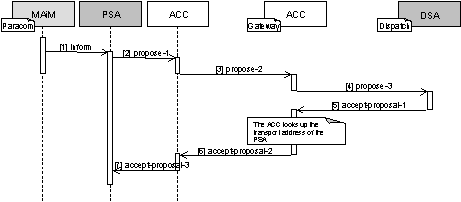
Figure 11: Example Negotiation of a Message Representation
1. Message 1 inform: The MA informs the PSA that the outbound throughput has changed.
(inform
:sender
(agent-identifier
:name MAiM@paracom.com)
:receiver (set
(agent-identifier
:name PSA@paracom.com))
:ontology FIPA-Nomadic-Application
:language FIPA-SL2
:protocol FIPA-Subscribe
:content
(= (iota ?x (
(qos-notification
(comm-channel
:name GPRS)
(throughput
(rate-value
:unit Kbits/s
:direction Outbound
:value ?x))
(change-constraint
:value (<
(qos
:throughput
(rate-value
:unit Kbits/s
:direction Outbound
:value 1)))))))
(0.96)))
2. Message 2 propose–1: Based on the new throughput value, the PSA decides to change to the message representation.
(propose
:sender
(agent-identifier
:name PSA@paracom.com)
:receiver (set
(agent-identifier
:name DSA@dispatch.com))
:ontology FIPA-Message-Representation
:language FIPA-SL0
:protocol FIPA-Propose
:content
((action
(agent-identifier
:name PSA@paracom.com)
(use
(msg-rep-selection
:send (sequence
(msg-representation
:name
fipa.acl.rep.bitefficient.std))
:recv (sequence
(msg-representation
:name
fipa.acl.rep.bitefficient.std)))))
true))
3. Message 3 propose–2: The ACC at the mobile host forwards the same message to the ACC at the gateway host.
4. Message 4 propose–3: The ACC at the gateway host forwards the same message to the PSA.
5. Message 5 accept-proposal–1: The PSA accepts the proposal and sends a message back to the DSA.
(accept-proposal
:sender
(agent-identifier
:name DSA@dispatch.com)
:receiver (set
(agent-identifier
:name PSA@paracom.com))
:ontology FIPA-Message-Representation
:language FIPA-SL0
:protocol FIPA-Propose
:content
(action
(agent-identifier
:name PSA@paracom.com)
(use
(msg-rep-selection
:send (sequence
(msg-representation
:name
fipa.acl.rep.bitefficient.std))
:recv (sequence
(msg-representation
:name
fipa.acl.rep.bitefficient.std))))
(msg-rep-selection
:send (sequence
(msg-representation
:name
fipa.acl.rep.bitefficient.std))
:recv (sequence
(msg-representation
:name
fipa.acl.rep.bitefficient.std)))))
6. Message 6 accept-proposal–2: The ACC at the gateway host forwards same message to the ACC at the mobile host.
7. Message 7 accept-proposal–3: The ACC at the mobile host delivers the same message to the PSA.
7 References
[FIPA00023] FIPA Agent
Management Specification. Foundation for Intelligent
Physical Agents, 2000. http://www.fipa.org/specs/fipa00023/
[FIPA00027] FIPA Query
Interaction Protocol Specification. Foundation for
Intelligent Physical Agents, 2000. http://www.fipa.org/specs/fipa00027/
[FIPA00035] FIPA Subscribe
Interaction Protocol Specification. Foundation for
Intelligent Physical Agents, 2000. http://www.fipa.org/specs/fipa00035/
[FIPA00036] FIPA Propose
Interaction Protocol Specification. Foundation for
Intelligent Physical Agents, 2000. http://www.fipa.org/specs/fipa00036/
[FIPA00069] FIPA ACL Message
Representation in Bit-Efficient Encoding Specification.
Foundation for Intelligent Physical Agents, 2000.
http://www.fipa.org/specs/fipa00069/
[FIPA00075] FIPA Agent Message
Transport Protocol for IIOP Specification. Foundation
for Intelligent Physical Agents, 2000.
http://www.fipa.org/specs/fipa00075/
[FIPA00076] FIPA Agent Message
Transport Protocol for WAP Specification. Foundation for
Intelligent Physical Agents, 2000.
http://www.fipa.org/specs/fipa00076/
[ITUE800] Recommendation E.800 - Telephone Network and ISDN, Quality of Service, Network Management and Traffic Engineering, Terms and Definitions Related to Quality of Service and Network Performance Including Dependability. International Telecommunication Union, International Telecommunication Union, 1995.
[ITUX135] Recommendation
X.135 - Speed of Service (delay and throughput), Performance Values for Public
Data Networks when Providing Packet-Switched Services. International Telegraph
and Telephone Consultative Committee, 1993.
[WAP99] Wireless Application Protocol
Specification Version 1.2. WAP Forum, 1999.
http://www.wapforum.org/what/technical.htm